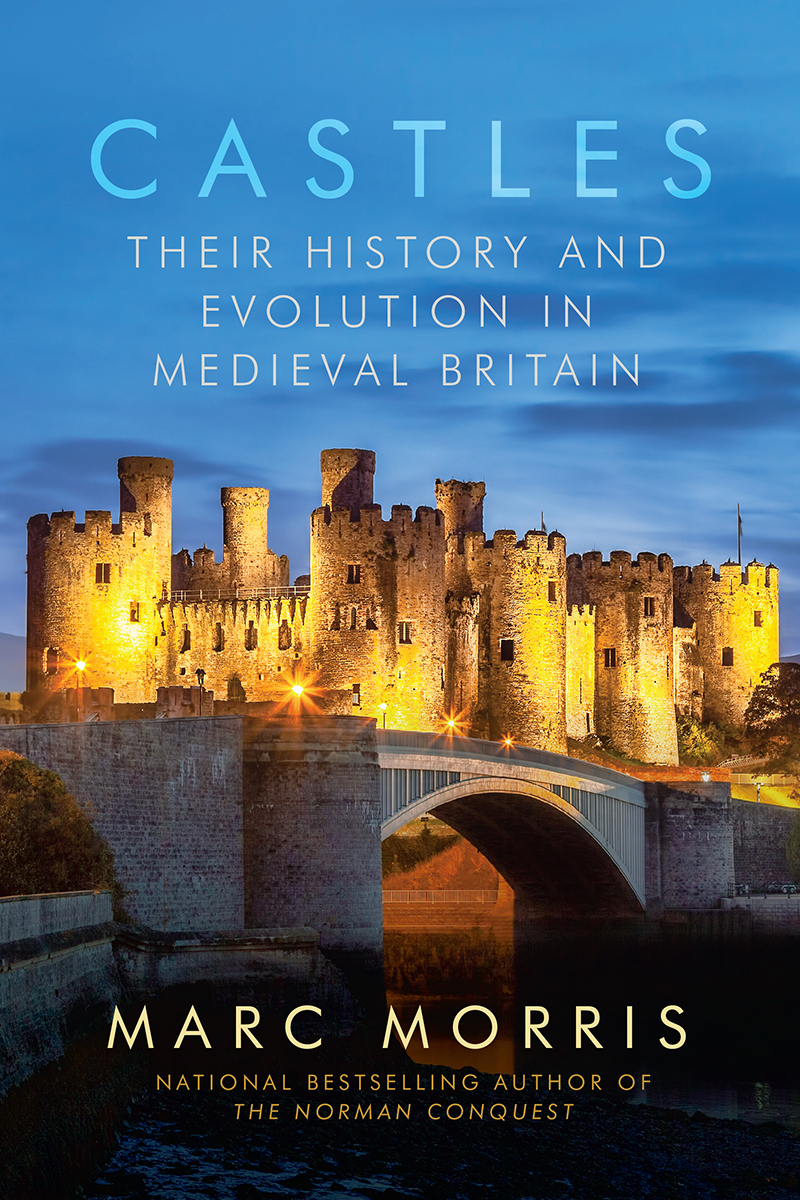Castles: Their History and Evolution in Medieval Britain by Marc Morris
Summary (from the publisher): Beginning with their introduction in the eleventh century, and ending with their widespread abandonment in the seventeenth, Marc Morris explores many of the country’s most famous castles, as well as some spectacular lesser-known examples.At times this is an epic tale, driven by characters like William the Conqueror, King John and Edward I, full of sieges and conquest on an awesome scale. But it is also by turns an intimate story of less eminent individuals, whose adventures, struggles and ambitions were reflected in the fortified residences they constructed. Be it ever so grand or ever so humble, a castle was first and foremost a home.
Review: Beginning in the eleventh century, this history provides a detailed account of castles throughout Medieval Britain until their fall from favor in the seventeenth century. Originally earthen works with timber defenses, these gradually became increasingly elaborate, stone structures. They were meant for defense and intimidation but were also homes at their heart. Morris provides a chronological overview of many of the grandest and well-known castles and some of the key figures in their development including William the Conqueror, King John, and Edward I.
Rather than providing an exhaustive accounting of each castle, Morris does an excellent job of making this topic approachable to the average reader. He instead chooses to focus on several key castles and the people behind them. The history behind the time period is explored, as is the architecture and elaborate process required to build these structures. This were significant, years' long projects in many cases. Builders would go so far as to reroute rivers - at considerable time and expense - just to be able to have a deep enough river to deliver stone for their castles on site. Morris also touches on the suspect nature of manpower behind these structures. It seems that at times men were forced to work on these projects against their will. The author clearly did significant research and his love for the history behind each of these structures shines through. At times I did lose track of the political thread since I'm not as familiar with the kings during the 11th and 12th centuries, but it didn't impact my understanding terribly much.
Over time, gunpowder and cannons slowly obliterated the purpose and effectiveness of castles as defensive strongholds and they fell out of favor. During Cromwell's rise to prominence, many were demolished. But many still survive to this today as reminders of the architectural pursuits of the time period and this book serves as an excellent history for their existence and legacy.
Stars: 3.5



Comments
Post a Comment